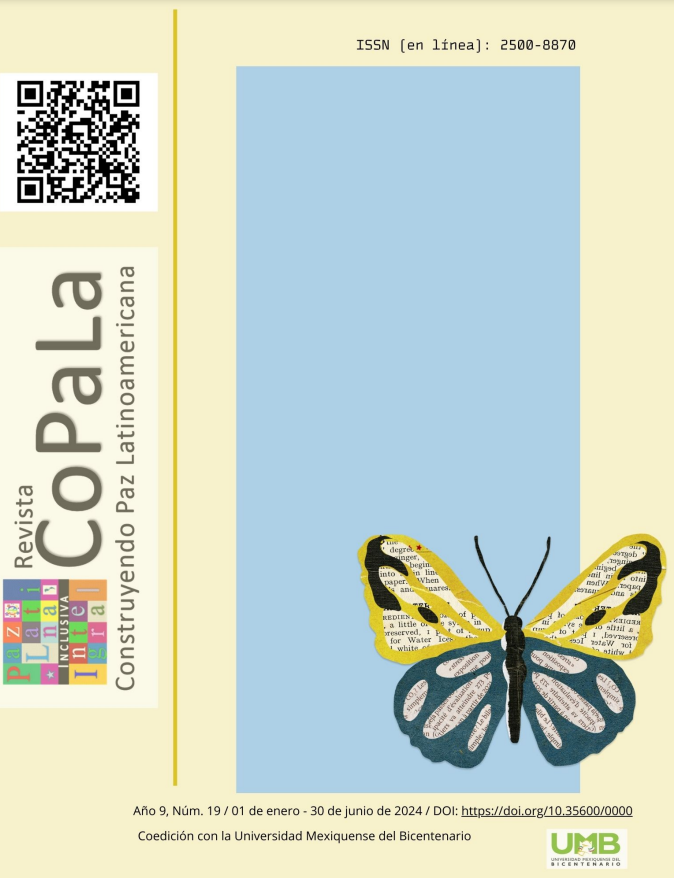Perspectivas agroecológicas en la producción de malanga; un enfoque hacia la sustentabilidad en el estado de Chiapas
Contenido principal del artículo
Resumen
La malanga, también conocida como taro o quiscamote en América y el Caribe, es una especie vegetal con aplicaciones ornamentales y culinarias que prospera en climas cálidos. El objetivo de esta investigación radica en reconocer experiencias y narrativas con enfoque agroecológico en un caso de estudio con agricultores dedicados al cultivo de malanga en los municipios de San Fernando, Tuxtla Gutiérrez y Tapachula, ubicados en el estado de Chiapas. Se empleó una metodología cualitativa que incluyó observación directa y diálogos semiestructurados. Los resultados obtenidos proporcionaron una caracterización de los actores sociales involucrados en el proceso y las diversas etapas del ciclo productivo de la malanga. Además, se destacan las prácticas que se originan en la sabiduría y el conocimiento de los campesinos, y que se centran en la preservación de los agroecosistemas desde una perspectiva de la pedagogía crítica. Se presentan, asimismo, enfoques alternativos para una producción sustentable, incluyendo algunas aportaciones de innovación y energías renovables. En conclusión, esta investigación subraya la relevancia de la malanga como un cultivo promisorio, así como el rescate de la sabiduría campesina que se orientan a la sustentabilidad y el desarrollo de las comunidades rurales.
Descargas
Detalles del artículo

Esta obra está bajo una licencia internacional Creative Commons Atribución-NoComercial-CompartirIgual 4.0.
Citas
Altieri, M. (2002). Agroecología: principios y estrategias para diseñar sistemas agrarios sustentables. En S. Sarandon (Ed.), Agroecología: el camino hacia una agricultura sustentable (págs. 49-56). Ediciones científicas americanas. Obtenido de https://gc.scalahed.com/recursos/files/r161r/w25280w/LibroAgroecologiaSarandon2002Completo.pdf
Balbuena, H. & Díaz, Y. (2021). Análisis de deshidratado de papa y malanga a través de secadores solares. [Tesis profesional, Universidad de Ciencias y Artes de Chiapas]. Repositorio UNICACH. Obtenido de https://repositorio.unicach.mx/handle/20.500.12753/4164
De Guialdino, I. (2006). Estrategias de investigación cualitativa. Gedisa.
Freire, P (1993). Pedagogía de la esperanza: un reencuentro con la pedagogía del oprimido. Siglo XXI.
Giroux, H. (2003). Pedagogía y política de la esperanza. Teoría, Cultura y enseñanza. Amorrortu editores.
Gobierno de Chiapas, S. (2012). Programa regional de desarrollo; Región III Mezacalapa. Obtenido de http://www.haciendachiapas.gob.mx/planeacion/Informacion/Desarrollo-Regional/prog-regionales/MEZCALAPA.pdf
Gómez, E. (2015). Maíz, milpa, milperos y agricultura campesina en Chiapas. Mundos rurales. Obtenido de https://www.aacademica.org/emanuel.gomez/21
Guillén, J., Barboza, I., & Villalobos, S. (2018). Efectos de la Política Agropecuaria en las Poblaciones Rurales del estado de Chiapas. Perspectivas teóricas, globalización e intervenciones públicas para el desarrollo regional. Obtenido de http://ru.iiec.unam.mx/4242/1/4-Vol1_Parte3_Eje4_Cap3-091-Guillen-Barboza-Villalobos.pdf
Gutiérrez, J. G. (2008). Agroecología y sustentabilidad. Convergencia, 15(46), 51-87. Obtenido de https://www.scielo.org.mx/pdf/conver/v15n46/v15n46a4.pdf
Leff, E. (2004). Racionalidad ambiental: la reapropiación social de la naturaleza. Siglo XXI.
Levy, D., Hausmann, R., Santos, M., Espinoza, L., & Flores, M. (2016). ¿Por qué Chiapas es pobre?. Center for International Development at Harvard University. Obtenido de https://growthlab.cid.harvard.edu/sites/projects.iq.harvard.edu/files/growthlab/files/cid_wp_300_spanish.pdf.pdf
Luengo, E. (2019). Ciencias sociales y complejidades, hacia un diálogo de mutuo. Iberoamerican Journal of Development Studies, 8(1), 82-105. Obtenido de http://www.gazeta-antropologia.es/?p=5144
Madrigal, L., Hernández, J., Carranco, M., Calvo, M., & Casas, R. (2020). Caracterización física y nutricional de harina del tubérculo de “Malanga” (Colocasia esculenta L. Schott) de Actopan, Veracruz, México. Archivos Latinoamericanos de Nutrición (ALAN), 68(2), 175-183. Obtenido de http://saber.ucv.ve/ojs/index.php/rev_alan/article/view/20262
Martínez, G. (2018). Modelado, simulación y caracterización de un secador solar para estudiar la cinética de secado de productos agrícolas en Tabasco. [Tesis doctoral, Universidad Juárez Autónoma de Tabasco]. Repositorio UJAT. Obtenido de https://ri.ujat.mx/jspui/bitstream/20.500.12107/3103/1/TESIS%20GABRIEL.pdf
Mazariegos, A., Águila, J., Milla, A., Espinosa, S., Martínez, J., & & López, C. (2017). Cultivo de malanga (Colocasia esculenta Schott) en Tuxtla Chico, Chiapas, México. Agroproductividad, 10(3), 731-737. Obtenido de https://revista-agroproductividad.org/index.php/agroproductividad/article/view/973
Montiel, M., Domíngueza, J., Teloxa, J., Aguilar, D., & Galvanb, E. (2022). Estudio de factibilidad técnica, económica y ambiental para la implementación de ecotecnologías en comunidades rurales de México. https://somim.org.mx/memorias/memorias2022/articulos/A8_91.pdf
Nazario, N., Arvizu, E., Mayett, Y., Del Carmen, M., & García, E. (2020). Producción y comercialización de malanga (Colocasia esculenta (L.) Shott) en Actopan, Veracruz, México: Perspectiva de cadena de valor. Agro Productividad, 13. Obtenido de https://www.revista-agroproductividad.org/index.php/agroproductividad/article/view/1660
Olguín, C., & Álvarez, M. (2011). La malanga (Colocasia esculenta (L.) Schott) bajo un enfoque de investigación-desarrollo. Agroproductividad, 4 (4). Obtenido de https://revista-agroproductividad.org/index.php/agroproductividad/article/view/584
Petrarca, R. (2021). Energías limpias en México: proyecciones para la energía solar. Revista Internacional de Salarios Dignos, 3(01), 1-24. Obtenido de http://20.225.127.54/index.php/OISAD/article/view/3002
Púa, A. L., Barreto, G. E., Zuleta, J., & Herrera. (2019). Análisis de Nutrientes de la Raíz de la Malanga (Colocasia esculenta Schott) en el Trópico Seco de Colombia. Información tecnológica, 30(4). Obtenido de https://www.scielo.cl/scielo.php?pid=S0718-07642019000400069&script=sci_arttext





